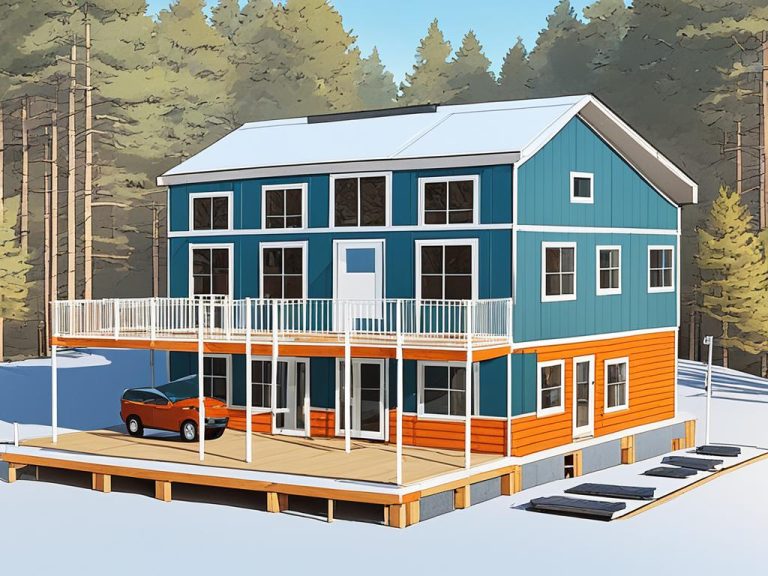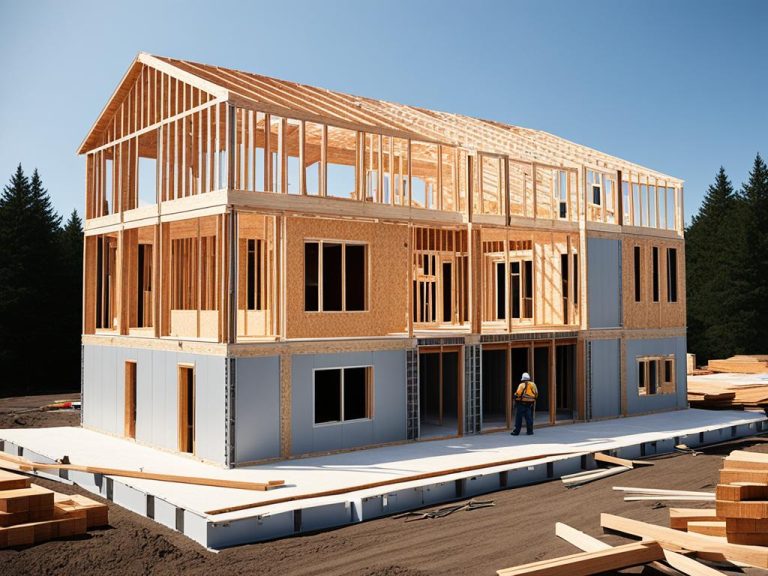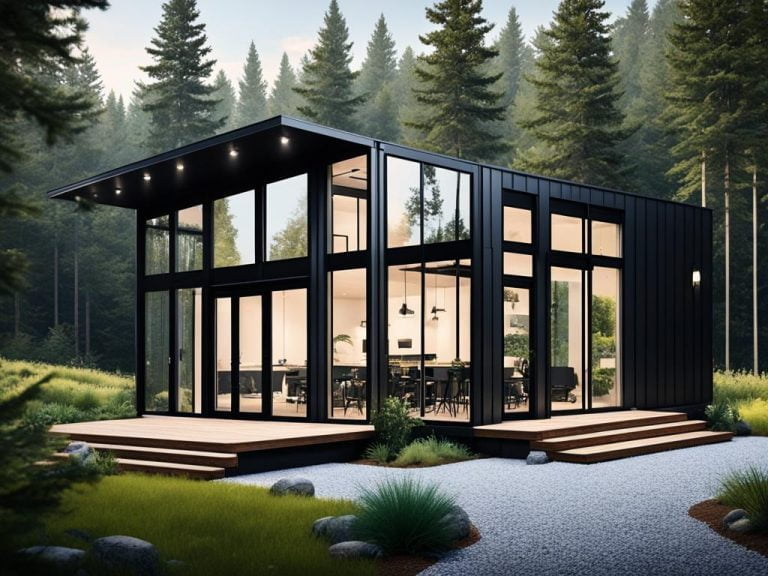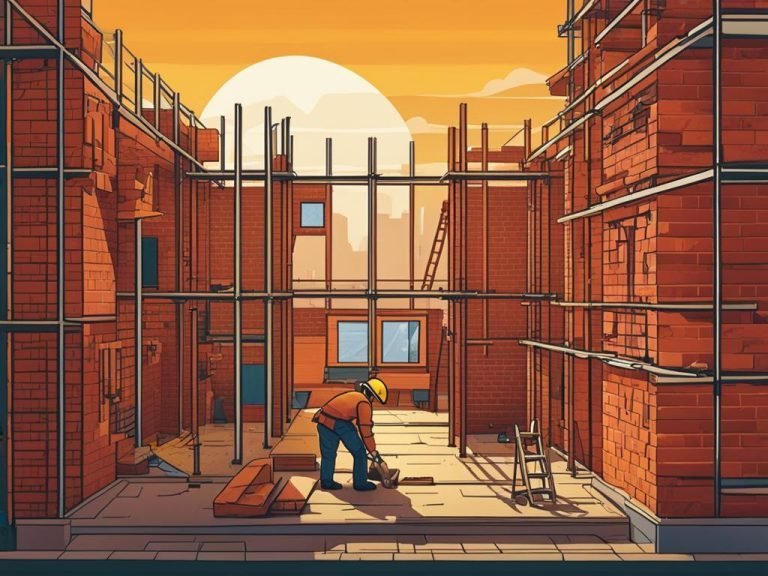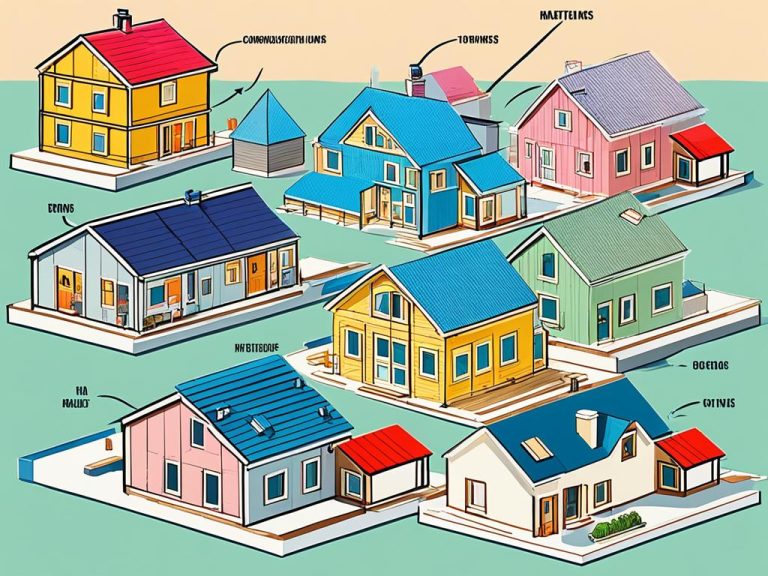Modular Construction in UK Housing: A Guide
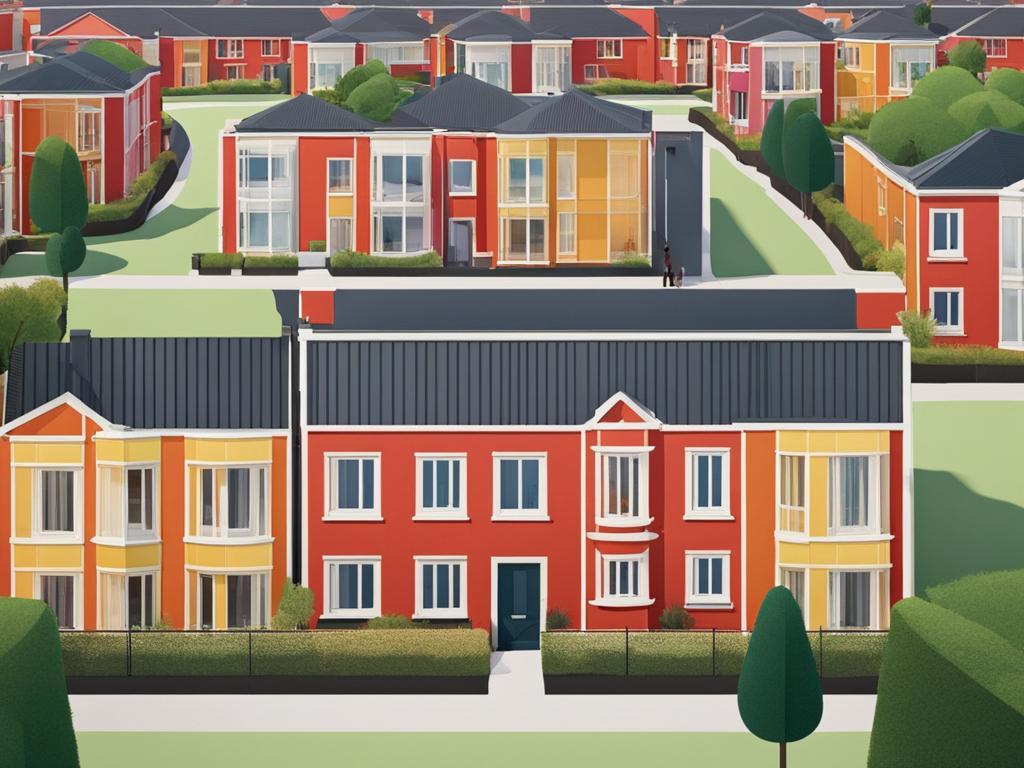
Modular construction in UK housing has emerged as a game-changing solution for affordable and sustainable homes. This innovative approach involves constructing buildings offsite in a factory setting, offering numerous benefits and addressing the pressing need for affordable housing. With modern construction techniques and eco-friendly practices, modular construction is revolutionizing the way homes are built in the UK.
Despite the stigma attached to prefabricated buildings in the past, modular homes in the UK now meet the same building regulations and standards as properties built onsite. This means that they offer the same quality and durability. Moreover, modular construction reduces waste, noise pollution, and construction delays caused by unfavorable weather conditions, making it a more efficient and sustainable option.
However, it is essential to consider the advantages and disadvantages of modular construction. On the one hand, it offers affordability, speed of construction, and environmental sustainability. On the other hand, there are limitations in terms of size, limited customization options, financing issues, and additional land costs.
There are two types of modular construction: permanent modular construction and relocatable buildings. Permanent modular construction involves multi-story or single building solutions, both retrofitting existing buildings and designing new projects around modular building techniques. Relocatable buildings, on the other hand, are fully or partially assembled buildings that can be moved and reused multiple times, providing flexibility and ease of relocation for temporary or mobile applications.
Modular construction has the potential to alleviate the UK’s housing crisis, but it requires coordination and cooperation between the government and the construction industry. Embracing modular construction represents a shift in mindset and adoption of new technologies. The future of UK housing lies in the modernization of the construction industry and the widespread adoption of modular housing solutions.
Key Takeaways:
- Modular construction in UK housing offers affordability, speed, and sustainability.
- Modular homes meet the same building regulations and standards as properties built onsite.
- Modular construction reduces waste, noise pollution, and construction delays caused by unfavorable weather conditions.
- There are advantages in terms of construction efficiency, but also limitations in size and customization options.
- Coordination and collaboration between the government and the construction industry are essential for the future success of modular construction in the UK housing sector.
What is Modular Construction?
Modular construction involves constructing building components, or modules, offsite in a factory. These modules are then transported to the development site for installation. Unlike traditional construction methods, where all the construction takes place onsite, modular construction allows for greater efficiency and precision in the construction process. The modules are built in a controlled factory setting, resulting in higher quality and fewer delays due to weather conditions. Once the modules are completed, they are transported to the site, where they are assembled and connected to create a finished building.
Modular construction offers a streamlined approach to construction, with individual modules built in a factory setting. This method allows for better quality control and faster construction times, as weather conditions and other external factors do not impact the construction process. The finished units are transported to the site, where they are installed and connected to create a complete building. This offsite construction process offers numerous advantages, including cost savings, shorter construction timelines, and reduced waste.
By constructing building components offsite, modular construction minimizes disruption to the local community and reduces noise pollution during the construction phase. The factory setting also allows for more precise construction and tighter quality control, resulting in buildings that meet or exceed the same building regulations and standards as onsite construction. Additionally, modular construction is a sustainable option as it produces less waste and utilizes eco-friendly building materials.

Advantages of Modular Construction
Modular construction offers several advantages over traditional construction methods. One of the major advantages is affordability. The controlled factory setting reduces labor and material costs, making modular construction a cost-effective option. Additionally, modular construction is faster than traditional construction, with projects being completed in half the time.
In a traditional construction project, weather delays often disrupt the construction schedule. However, modular construction is not affected by weather conditions, resulting in quicker completion times. This speed of construction is particularly beneficial for addressing the urgent demand for housing in the UK.
Despite misconceptions about the quality of prefabricated homes, modular buildings meet the same building regulations and standards as onsite construction. Stringent building regulations ensure that modular construction adheres to the same safety standards and guidelines as traditional construction methods, providing homeowners with peace of mind.
Furthermore, modular construction has a lower environmental impact compared to traditional construction. The controlled factory setting reduces waste and allows for efficient use of materials. Additionally, modular construction incorporates eco-friendly building materials and techniques, minimizing its carbon footprint.
Another advantage of modular construction is the reduction of noise pollution. The majority of the construction work takes place in the factory, away from residential areas. This helps create a more harmonious living environment for both future residents and existing communities.
Overall, the affordability, speed of construction, compliance with building regulations, reduced environmental impact, and minimal noise pollution make modular construction a compelling choice for the UK housing market.
Disadvantages of Modular Construction
Despite its advantages, modular construction also has some drawbacks that need to be considered.
Size Limitations: One drawback of modular construction is the size limitations of the modules. Since the modules need to be transported to the site, their height and width can be restricted, which may impact the overall design and functionality of the building.
Financing Issues: Financing can be an issue when it comes to modular homes. Banks may have different loan requirements and may be less willing to provide financing for modular construction projects, which can result in additional challenges for prospective homeowners seeking to pursue this construction method.
Limited Customization: Another disadvantage of modular homes is the limited customization options. Compared to traditional homes, modular homes may have fewer layout options and material choices available. This can be a drawback for those who have specific design preferences or require customization to meet their unique needs.
Land Costs: Additionally, the cost of land for modular homes should not be underestimated. Depending on the location and availability of suitable land, the cost can be significant and should be factored into the overall project budget.
It’s important to weigh these disadvantages against the benefits of modular construction to determine if it’s the right choice for your housing needs.

Types of Modular Construction
When it comes to modular construction, there are two main categories: permanent modular construction (PMC) and relocatable buildings. Let’s explore each of these in more detail:
Permanent Modular Construction (PMC)
Permanent modular construction involves using modular techniques in the construction of multi-story or single buildings. This method can be applied to both retrofitting existing structures and designing new projects. By incorporating modular building techniques, developers can benefit from the speed and efficiency of offsite construction while creating permanent, high-quality buildings.
Relocatable Buildings
As the name suggests, relocatable buildings are fully or partially assembled structures that can be moved and reused multiple times. These buildings are often used for temporary or mobile applications, such as mobile classrooms, healthcare clinics, or even temporary accommodation solutions. Relocatable buildings offer flexibility, fast delivery, and ease of relocation, making them a convenient choice for various projects.
Whether it’s permanent modular construction or relocatable buildings, both methods offer unique advantages and can be tailored to specific project requirements.
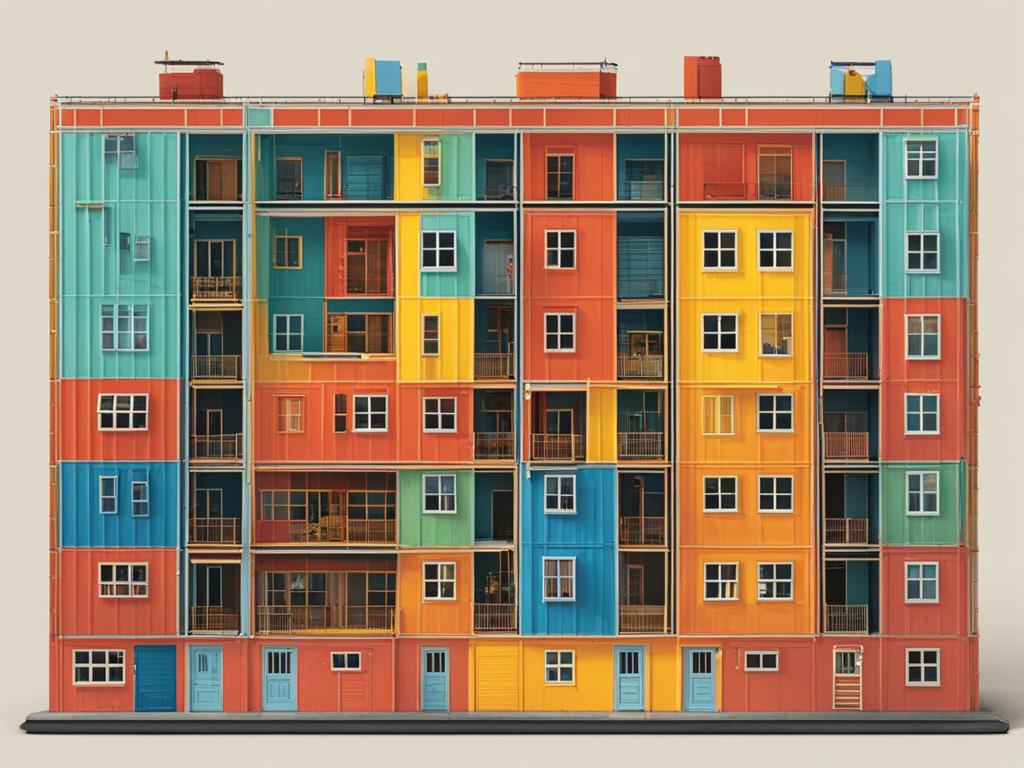
The Future of Modular Construction
Modular construction holds promise for addressing the UK’s housing crisis. With a severe housing shortage and a skills crisis in the construction industry, there is a pressing need for innovative solutions. Modular construction offers a way to meet the demand for affordable housing in a shorter timeframe, helping to alleviate the housing crisis.
However, for modular construction to become mainstream, the industry needs modernisation and coordination between the government and the construction sector. In terms of innovation, the construction industry lags behind other sectors and adopting modular construction requires a shift in mindset and the adoption of new technologies.
The future of modular construction in the UK housing sector relies on industry-wide collaboration and support. It is crucial for the government and the construction industry to work together to drive innovation and promote the adoption of modular construction techniques. By embracing industry innovation, the UK can address the housing crisis more effectively and efficiently.

In conclusion, the future of modular construction in the UK holds immense potential for solving the housing crisis. Modernisation, coordination, and industry innovation are the key factors that will pave the way for the widespread adoption of modular construction. By embracing this construction method and working collaboratively, the UK can overcome the challenges of the housing crisis and provide affordable and sustainable housing solutions for its residents.
Conclusion
Modular construction offers numerous benefits for the UK housing sector. It provides an affordable and sustainable solution to address the country’s housing crisis. With the ability to construct buildings offsite, modular construction significantly reduces construction time and improves productivity.
Despite its advantages, modular construction also presents challenges that need to be overcome. Financing issues may pose a hurdle for potential homeowners, and limited customization options may deter some individuals. Additionally, the construction industry needs to embrace modernization and innovation to fully harness the potential of modular construction.
However, with strong coordination and collaboration between the government and the construction industry, modular construction has the potential to revolutionize the UK housing sector. By investing in the development and support of this construction method, the UK can create innovative and eco-friendly solutions to meet the needs of today’s society. The future of UK housing lies in the benefits that modular construction can bring, such as affordability, speed, and sustainability.
FAQ
What is modular construction?
Modular construction is a method of constructing buildings or homes offsite in a factory setting. Building components, or modules, are constructed in a controlled environment and then transported to the development site for installation.
What are the advantages of modular construction?
Modular construction offers several advantages, including affordability, speed of construction, and environmental sustainability. It also meets the same building regulations and standards as properties built onsite, reduces waste, noise pollution, and construction delays caused by weather conditions.
What are the disadvantages of modular construction?
Some disadvantages of modular construction include size limitations of the modules, financing issues, limited customization options, and additional land costs.
What are the types of modular construction?
There are two types of modular construction: permanent modular construction (PMC) and relocatable buildings. PMC refers to the use of modular construction in multi-story or single building solutions, while relocatable buildings can be fully or partially assembled buildings that can be moved and reused multiple times.
Can modular construction address the UK’s housing crisis?
Modular construction has the potential to address the UK’s housing crisis by providing affordable housing in a shorter timeframe. However, it requires coordination between the government and the construction industry to embrace modular construction and support its growth.

